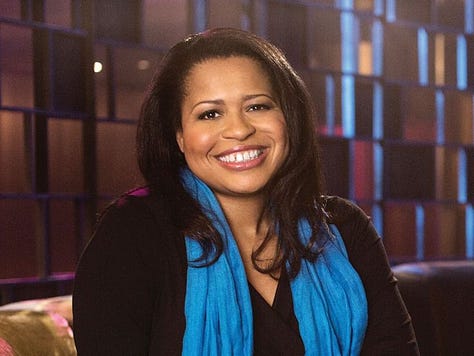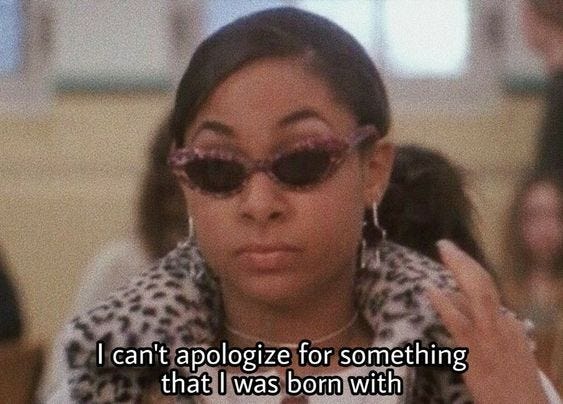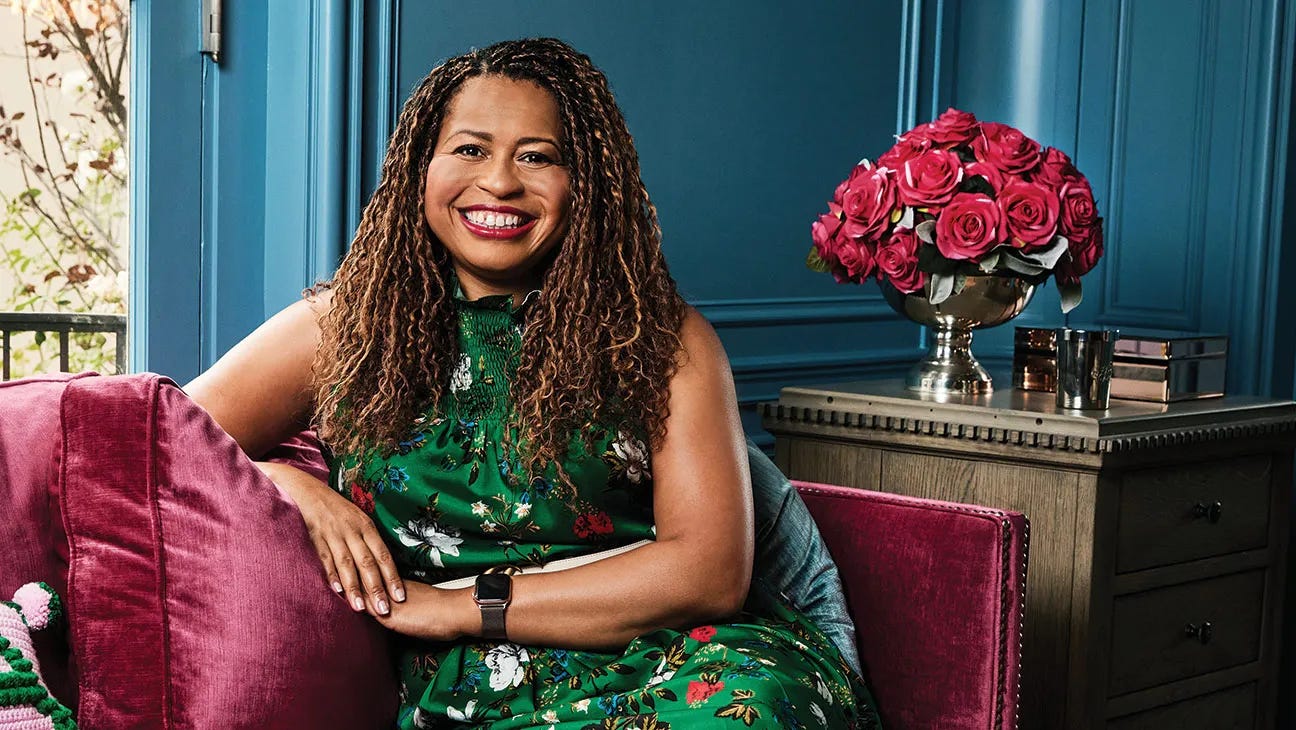Week Two: Exploring Your Creative Strengths
Creative Visionary Course - #artstackcreators
Hey everyone! 💛 Your support means the world to me, and I’m so grateful for every like, share, and kind word you’ve shared about my work. If you’d like to support me financially, here are a few ways you can contribute to my creative journey:
Cash App: Any amount helps and is truly appreciated!
Buy Me a Coffee: – A small gesture can make a big difference. Plus, I’ll be shouting out supporters on my platforms!
Purchase My Art: Owning a piece of my work is a beautiful way to connect with my journey and keep the creativity flowing.Every contribution helps me continue creating, advocating, and inspiring through my art and vision. Thank you for believing in me and being part of my story! 🖤
Creativity isn’t just about talent; it’s about the thought of self-awareness. As creative visionaries, we must understand what sets us apart, refine our strengths, and shape our unique artistic identity. This week’s lesson focuses on uncovering and honing those creative gifts through self-exploration, practical exercises, and case studies of Vince Staples, Courtney A. Kemp, and Solange Knowles. Each of these visionaries has mastered the art of leveraging their unique strengths while staying true to themselves. By the end of this lesson, you’ll have a deeper understanding of your creative strengths and how to use them to build a lasting artistic impact.
Lesson One: The Power of Self-Awareness in Creativity
Before you can master your craft, you need to understand what makes you different. Too often, artists and creatives feel pressured to conform to industry standards or imitate what’s already popular. But the most influential creative visionaries succeed because they fully embrace their individuality. This lesson is about tuning into your strengths, recognizing what makes your work distinct, and building confidence in your creative identity.
What Makes a Creative Strength?
A creative strength is more than just talent—it’s a combination of skills, perspective, and instinct. Think of it as the intersection of what you do naturally well, what excites you, and what resonates with others. Creative strengths include:
Authentic storytelling
A strong visual or auditory aesthetic
The ability to evoke emotion
A distinct voice or style
An innovative approach to traditional mediums
Case Study: Vince Staples – Mastering Authenticity
Vince Staples stands out in the rap industry not because he chases trends but because he actively resists them. He has built a career on minimalism, sharp storytelling, and a refusal to conform to industry expectations. Instead of glamorizing the streets, he speaks about their realities with wit and unfiltered honesty. His ability to tell stories without embellishment is his creative strength.
Staples proves that staying true to oneself is a creative superpower. His approach teaches us that:
You don’t have to do what’s expected to be successful.
Stripping away the unnecessary allows your core message to shine.
Authenticity resonates more than imitation.
Reflection Prompt: What aspects of your creative work feel the most effortless? Which feel the most challenging?
Exercise: Identify three aspects of your work that make it uniquely yours. Write about how they set you apart and how you can amplify them.
Lesson Two: Crafting Your Narrative & Finding Your Lane
My Creative Journey
When we take the tragedy and abuse out of my life and focus on my creative journey that led me to become an abstraction artist, that’s when you really get to know me. If you'd asked me a year ago, “Have you always been this creative?” I would’ve answered no, like a dumb ass. However, the reality is that I’ve always been an artistic genius waiting to be …
Every creative visionary has a story. Whether we realize it or not, our personal experiences shape our work. Recognizing and refining that narrative helps us create with intention. Your lane isn’t something you find—it’s something you define.
Understanding Your “Why”
Ask yourself:
What themes naturally appear in my work?
What messages do I feel compelled to share?
How does my background influence my creative approach?
Identifying these patterns helps solidify your artistic purpose and allows you to make intentional choices in your work.
Case Study: Courtney A. Kemp – Visionary Storytelling
Courtney A. Kemp, the creator of Power, changed the landscape of Black storytelling in television. She didn’t just create a hit show—she built an empire rooted in authentic, layered narratives. Her strength lies in merging intellectual storytelling with raw, emotional depth, allowing her to craft compelling, complex characters that resonate with audiences.
Her creative success is a result of:
Deeply understanding her subject matter.
Crafting narratives that are both culturally specific and universally engaging.
Developing characters that reflect real-life dynamics and internal struggles.
Lesson from Courtney: Own your perspective. Your lived experiences and interests shape your creative voice. The more personal and intentional your work, the more impactful it becomes.
Exercise: Write down 3-5 recurring themes in your work. What do they say about your creative identity? How can you use these themes to develop a more intentional narrative in your art?
Lesson Three: The Art of Refinement – Evolving While Staying True to Yourself
Great artists evolve, but they don’t lose their essence. The key to longevity as a creative visionary is knowing when to reinvent and when to refine.
Knowing When to Reinvent
Change is inevitable. The challenge is embracing it while staying true to your core message. Evolution doesn’t mean abandoning your identity—it means deepening and expanding it.
Some signs it’s time to evolve:
Your work starts feeling repetitive or uninspired.
You feel disconnected from your creative process.
You’re drawn to new styles, mediums, or perspectives.
Case Study: Solange Knowles – The Power of Evolution
Solange Knowles is a master of artistic transformation. She went from an overlooked artist to a critically acclaimed creative force by fully embracing her individuality. Her album A Seat at the Table was more than just music—it was a cultural statement, a visual experience, and a movement. Solange’s strength lies in her ability to merge music, visual art, and performance in ways that push boundaries.
Her success teaches us:
Reinvention is necessary for growth.
A strong creative voice can transcend mediums.
Taking creative risks leads to innovation.
Exercise: Choose one piece of your work and reinterpret it in a new style or medium. What changes? What remains the same? This exercise will help you see the essence of your creative voice beyond the medium you use.



By identifying and honing your creative strengths, you gain clarity on your artistic path. Vince Staples, Courtney A. Kemp, and Solange Knowles show us that success isn’t about fitting into an industry mold—it’s about refining what makes us unique and pushing creative boundaries.
Discussion Prompts:
What are three words that define your creative identity?
How do your strengths differentiate you from others in your field?
What’s one way you can push your creative vision further this week?
This is the foundation of your creative evolution. The next step is using this self-awareness to create with intention and impact.
As you move forward, take the time to reflect on your strengths and integrate them into your daily creative practice. Experiment with new methods, refine your narrative, and push the boundaries of your work. Continue studying creatives who inspire you, and apply their lessons to your own journey. Most importantly, remain true to your unique vision—the world needs what only you can create.
See you next week. :)
Bonus for Paid Subscribers:
Keep reading with a 7-day free trial
Subscribe to The Canvas & Cause to keep reading this post and get 7 days of free access to the full post archives.












